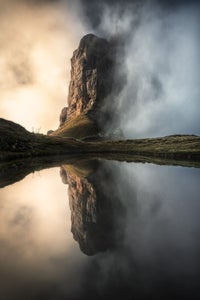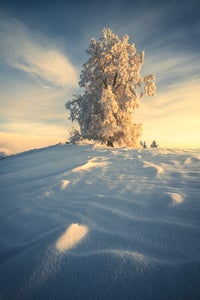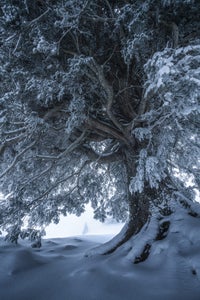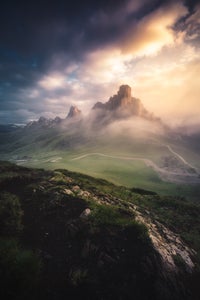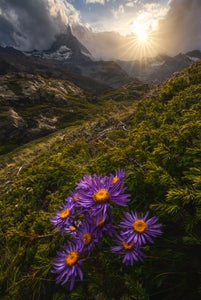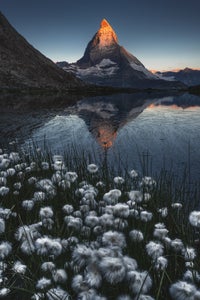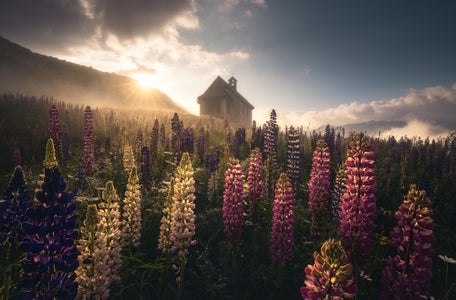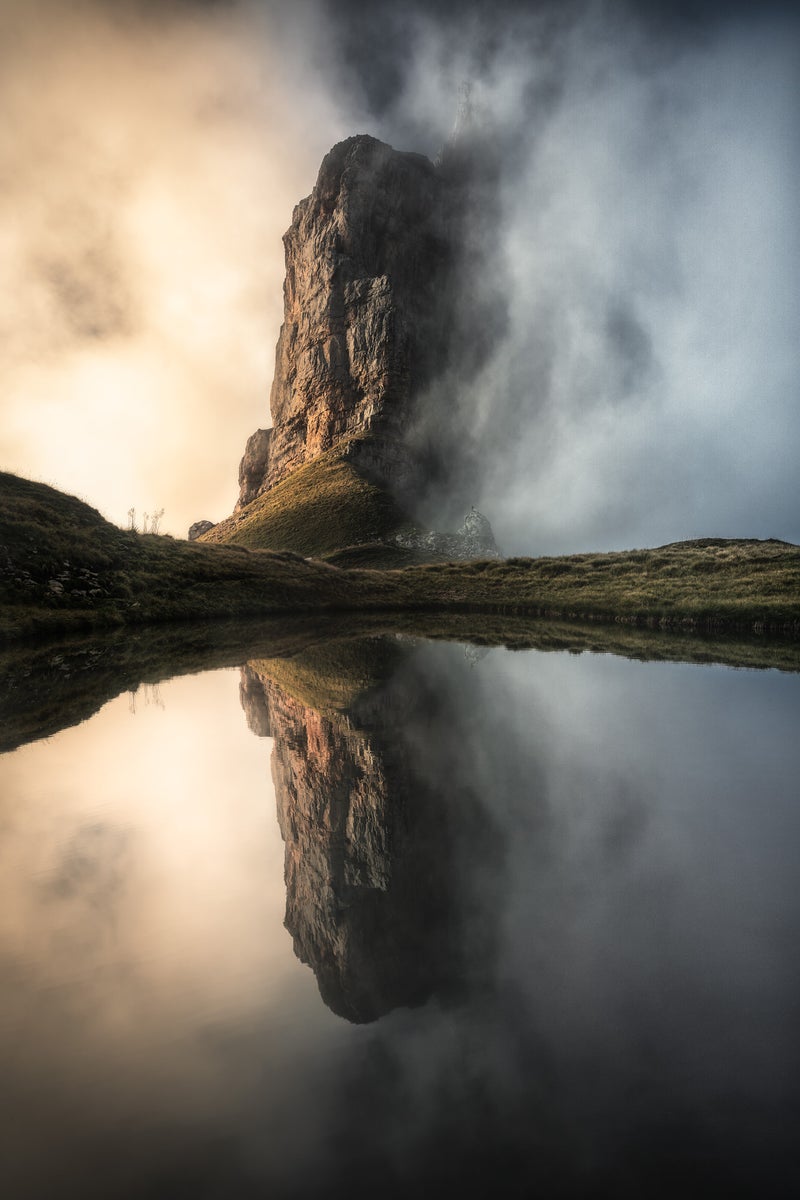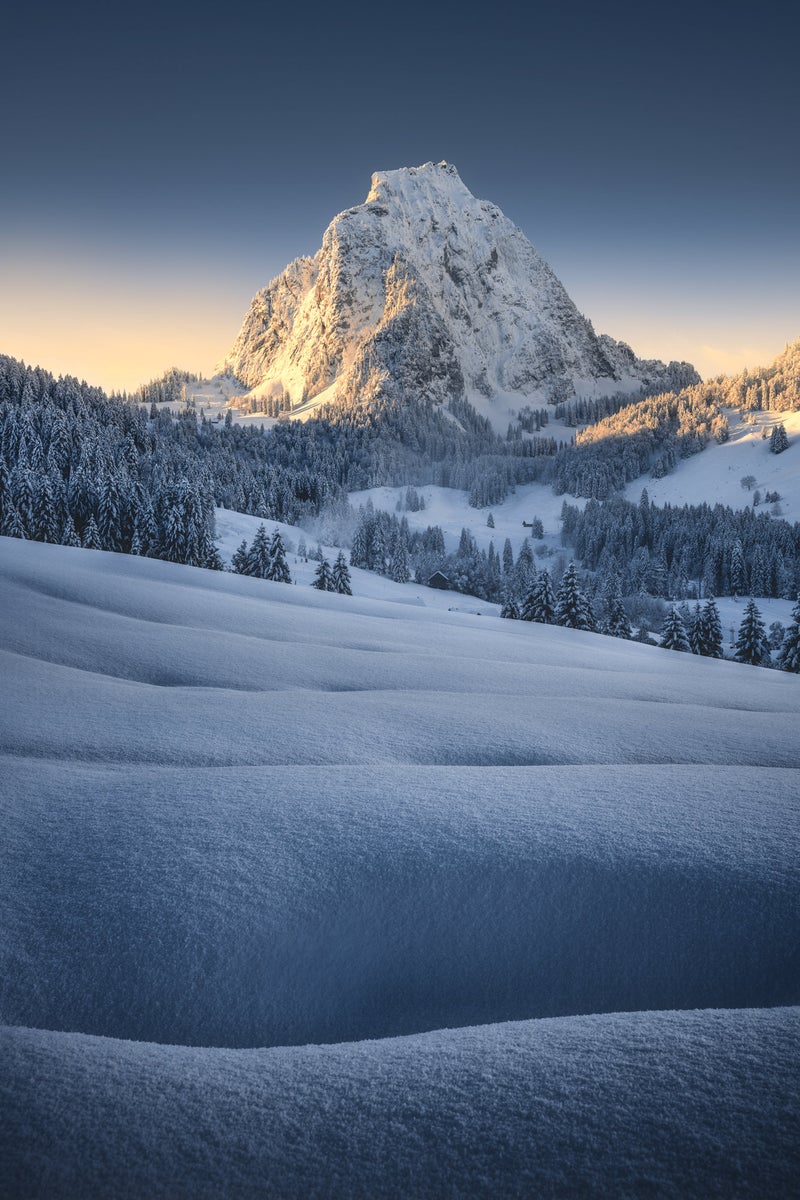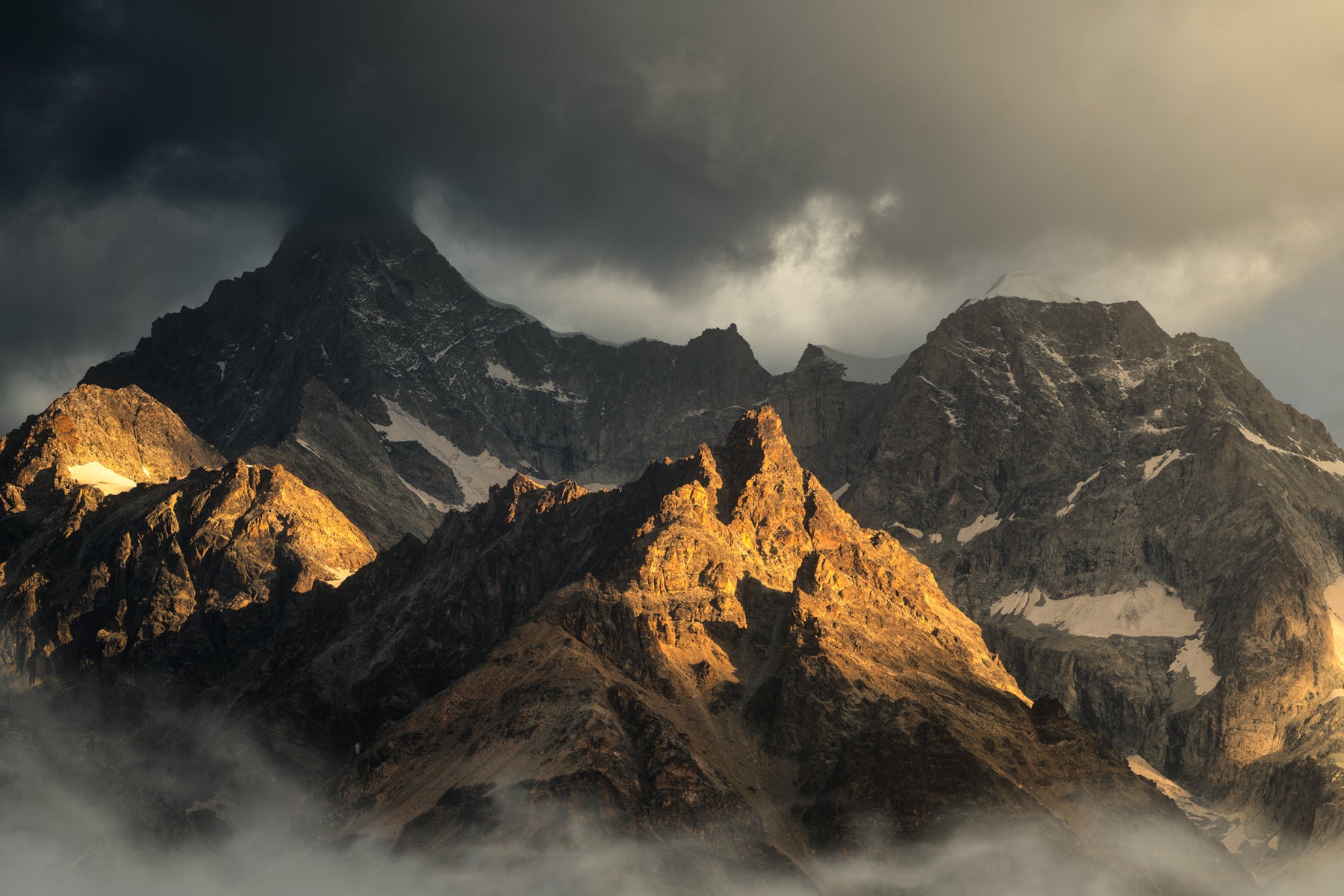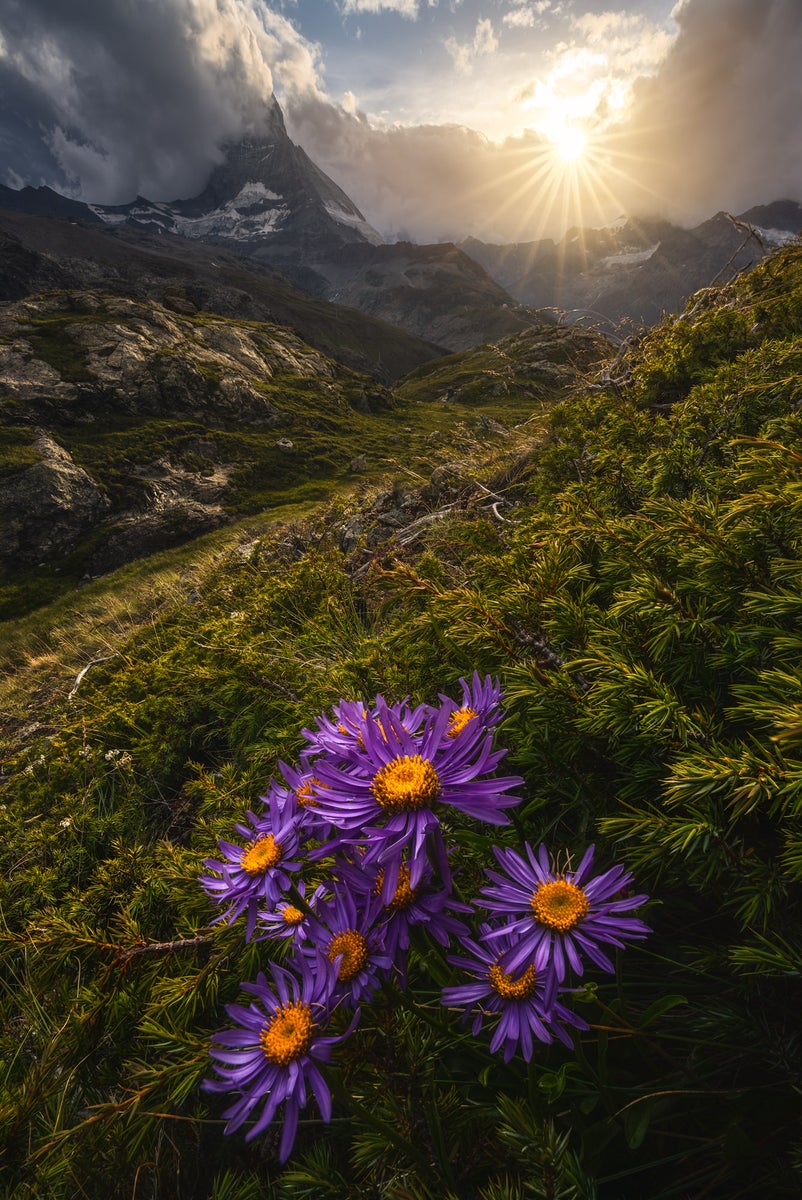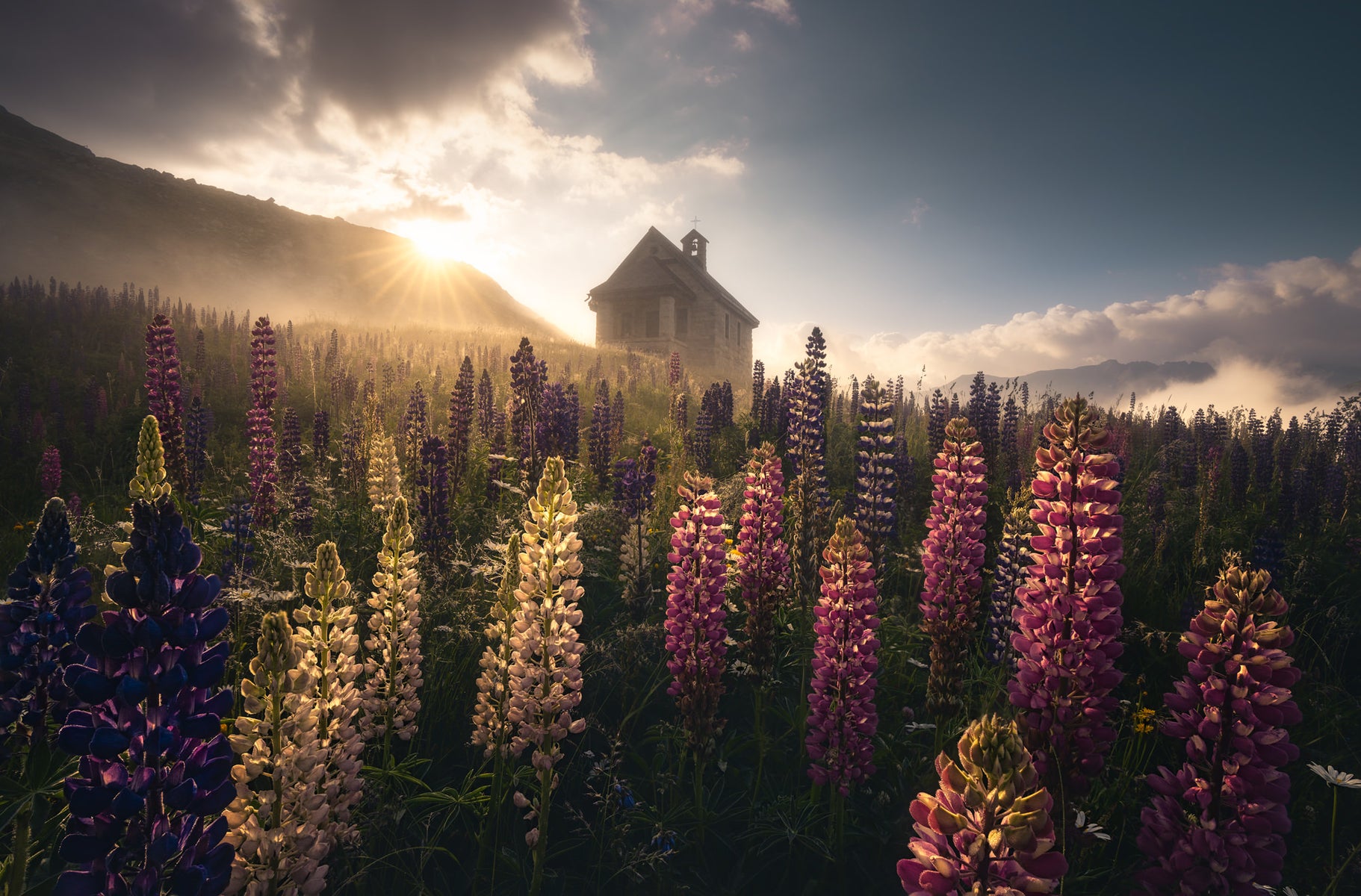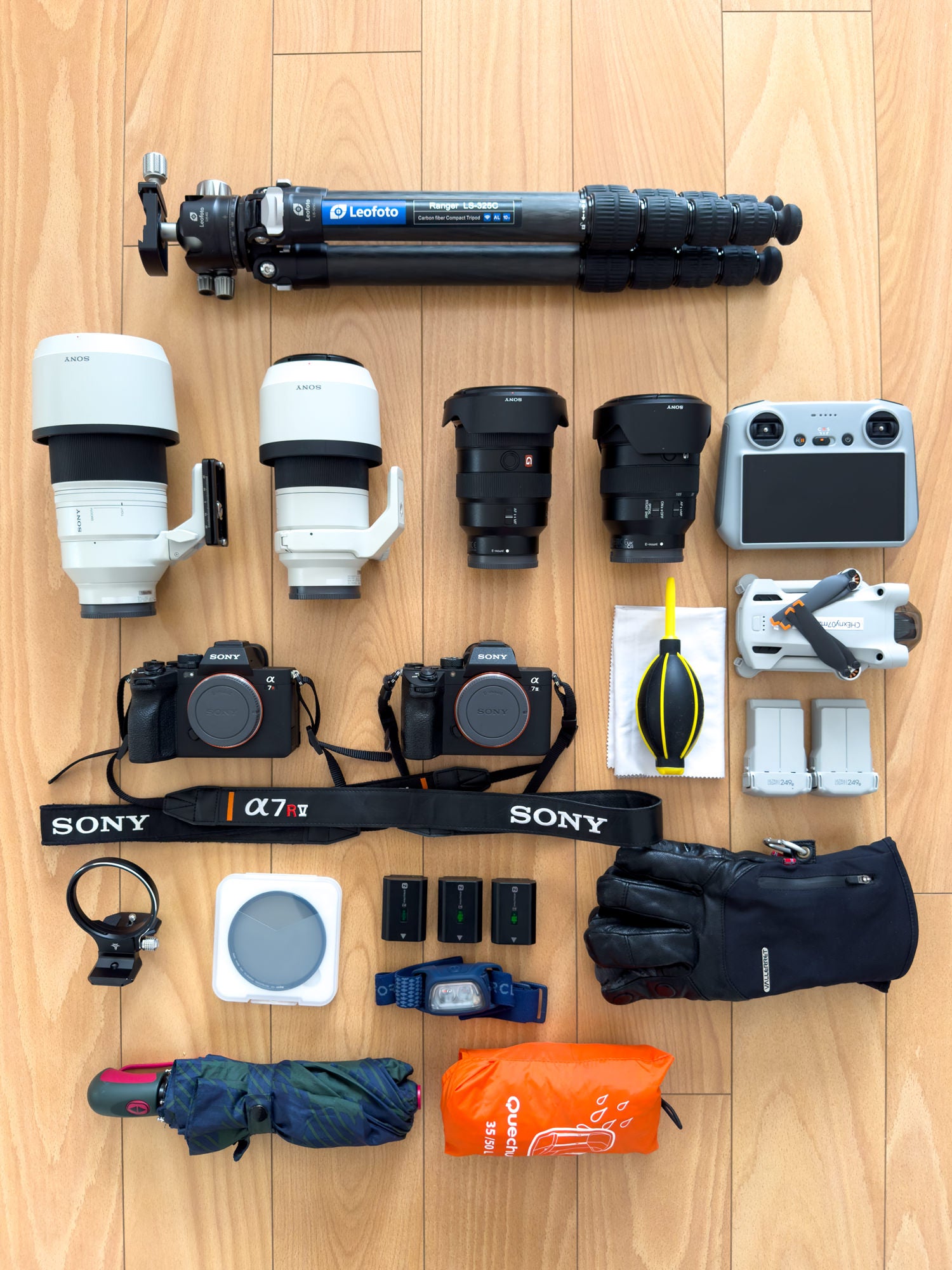Antonio Valente (@valens.landscape) is a landscape photographer whose landscape photography covers the gamut from dramatic alpine scenes to tranquil coastal vistas. "My first camera was a Sony Alpha 7 III," he says, "which I still own today, along with the splendid Sony 16-35mm f/2.8 G Master lens, which remains my favorite lens after all these years." To cover the breadth of the landscapes he loves, over time he's added another Sony Alpha camera and several Sony G Master and G zoom lenses to his kit. Keep reading as Valente shares what's in his bag for beautiful landscape photography.
Product Preview – In This Article You'll Find:
–Sony Alpha 7R V
–Sony Alpha 7 III
–Sony 16-35mm f/2.8 G Master
–Sony 24-105mm f/4 G
–Sony 100-400mm f/4.5-5.6 G Master
–Sony 70-200mm f/4 G
–Sony NP-FZ100
Cameras
Sony Alpha 7R V: This camera is my top choice when I'm taking photos. The 61 MP back-illuminated full-frame sensor allows me to capture high-quality images with exceptional sharpness. The dynamic range of this camera is incredible, and the IBIS (in-body image stabilization) is truly fantastic when shooting without the use of a tripod. The AF is fast and accurate. I have had the opportunity to test it on other genres of photography such as bird photography and macro photography.
The main innovation of this camera is the focus bracketing, allowing for a simple and fast capture of shots needed to achieve a sharp final image at all points in post-production. There's one more feature that may seem of little interest, but especially for landscape photographers like me, it's not: the new multidirectional screen. It is very convenient and useful when taking a photo with a foreground in a very low position.

“This is one of my latest photos, representing, in my opinion, the essence of winter with this icy tree touched by the first light of day as the fog disperses.” Photo by Antonio Valente. Sony Alpha 7R V. Sony 16-35mm f/2.8 G Master. 1/400-sec., f/13, ISO 100
Sony Alpha 7 III: This was my first camera and is now my backup camera. I am very attached to it and recommend it for its excellent price/quality ratio to anyone looking to start taking photos with a full-frame camera. The resolution and dynamic range are excellent, and it performs well in low light. Additionally, its lightweight design is an advantage compared to other more recent models.

“After a trek of about three and a half hours, I reached this place shrouded in fog and took this photo as the mist began to clear, revealing the mountain. The person in the photo is me after setting a 10-second self-timer.” Photo by Antonio Valente. Sony Alpha 7 III. Sony 16-35mm f/2.8 G Master. 1/25-sec., f/13, ISO 100
Lenses
Sony 16-35mm f2.8 G Master: This wide-angle zoom is my favorite lens and is a must-have in my camera bag. Its high versatility is invaluable in landscape photography, allowing for multiple compositions with focal lengths ranging from 16 to 35 mm without the need to change lenses. The resolution and contrast of the images are high, and its resistance to flare in backlit situations is very good. Additionally, it is a compact and lightweight lens despite being a wide-angle zoom, which is essential for me, especially when I'm often in the mountains.
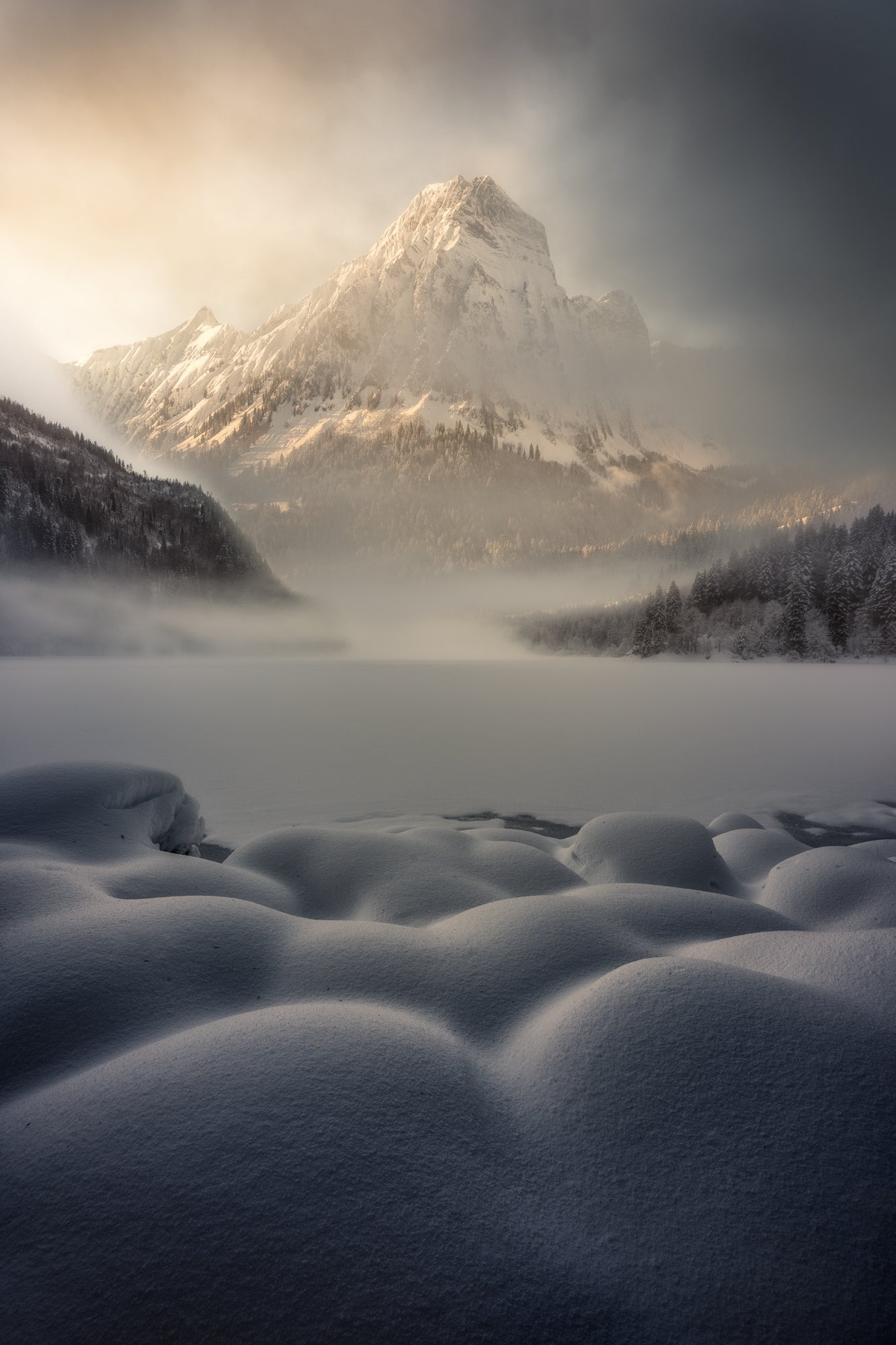
“This is one of my favorite places in Switzerland during winter because during this time of the year, wonderful atmospheres often form with snow, fog, and light.” Photo by Antonio Valente. Sony Alpha 7 III. Sony 16-35mm f/2.8 G Master. 1/20-sec., f/16, ISO 100
Sony 24-105mm f/4 G: If I were to start taking photos today, this lens would be the first one I'd buy. It's a truly versatile lens that adapts well to various situations with its focal range of 24-105 mm. Compact and lightweight like few other lenses, it has incredible optical quality, making its price/quality ratio undoubtedly excellent.
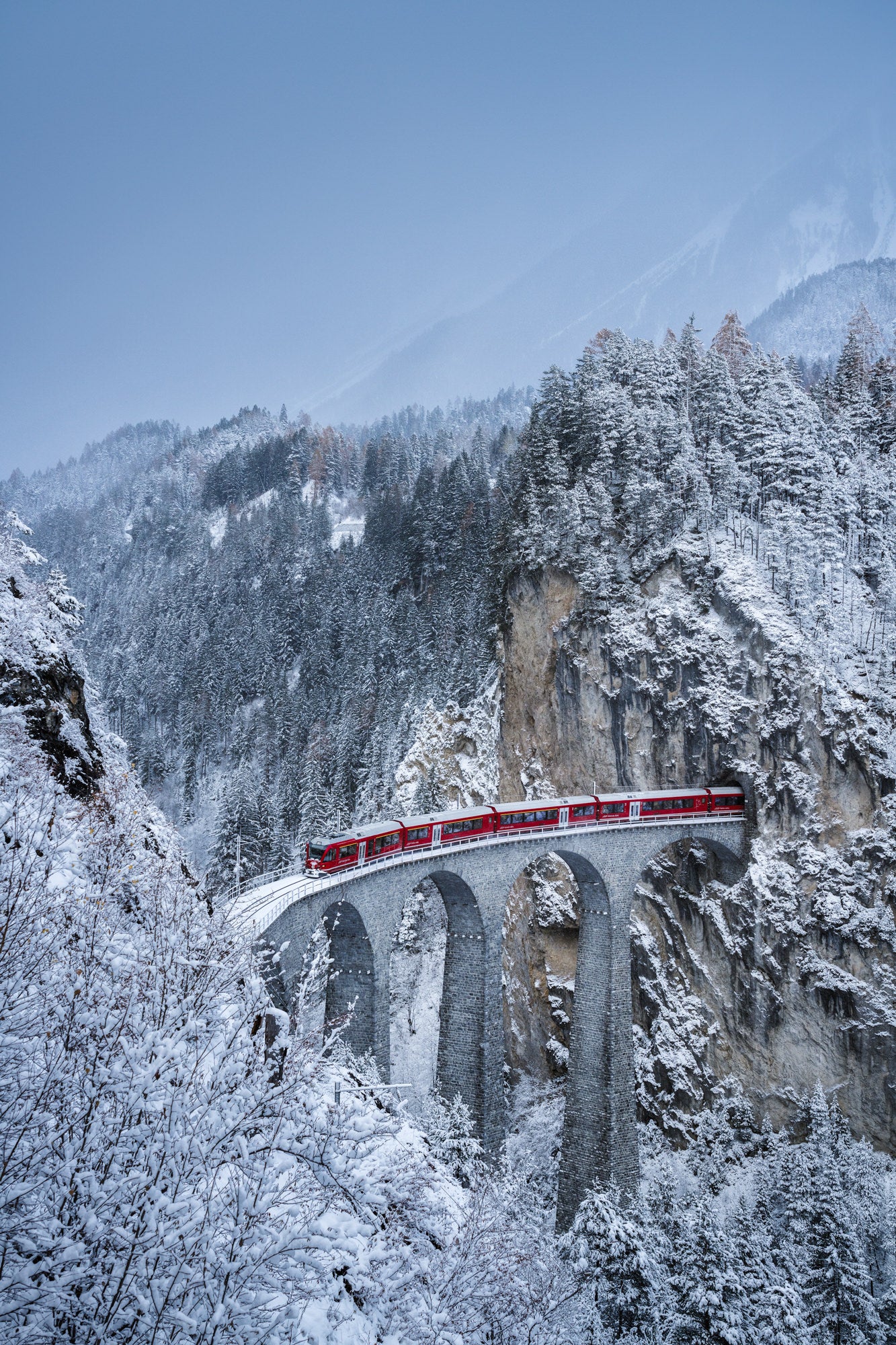
“The world-famous Swiss red train as it crosses an equally renowned centennial Swiss bridge on a typical winter day.” Photo by Antonio Valente. Sony Alpha 7RV. Sony 24-105mm f/4 G. 1/250 sec., f/8, ISO 500
Sony 100-400mm f/4.5-5.6 G Master: I find this telephoto lens really enjoyable; I often use it even without a tripod to capture details at a certain distance. The sharpness at 400mm focal length is impressive, and the autofocus is fast and accurate just like the image stabilization with the integrated optical SteadyShot. Once again, it's a compact lens despite being a superzoom telephoto, which is a significant advantage for transportation. Alongside the Sony 16-35mm GM and the Sony 24-105mm G, it forms the perfect trio for landscape photographers.

“The telephoto lens showcased its impressive sharpness and perfect image stabilization in this photo. It wasn't easy shooting at a certain distance without a tripod and in the fog.” Photo by Antonio Valente. Sony Alpha 7R V. Sony 100-400mm f/4.5-5.6 G Master. 1/200 sec., f/13, ISO 100
Sony 70-200mm f/4 G: It's a lens I use when I'm sure I won't need focal lengths beyond 200mm, resulting in weight savings compared to the Sony 100-400 GM superzoom. This telephoto lens is also compact, sharp, and has excellent image stabilization. Due to its price/quality ratio, it's an excellent choice for those starting to take photos and needing a fairly versatile zoom lens.

“In recent years, this place has become very famous for the perfect alignment of the three hills, each crowned with a tree. In my opinion, the atmosphere here in winter is truly evocative.” Photo by Antonio Valente. Sony Alpha 7R III. Sony 70-200mm f/4 G. 1/2 sec., f/14, ISO 100
Accessories
Sony NP-FZ100: It's important to always have spare charged batteries with you. I usually carry three (especially in winter in the Alps), plus the one in the camera. So far, it has never been necessary to use them all, as they are very long runtime, and I always recommend using original Sony batteries for this reason.
Drone: This allows me to explore new aerial shooting perspectives with minimal space consumption in my backpack.
Leofoto LS-325C Tripod: This tripod is sturdy, stable, compact, and, above all, lightweight, making it ideal for my excursions in the Alps.
Kase KW Revolution CPL filter: The CPL filter is always with me, and I primarily use it to eliminate reflections on water surfaces or foliage.

Photo by Antonio Valente. Sony Alpha 7R V. Sony 16-35mm f/2.8 G Master. 1/15-sec., f/16, ISO 100
Silence Corner ATOLL S: It’s a rotating collar that attaches to a camera body to allow quick rotation from horizontal to vertical orientation without detaching the camera from the tripod.
Vallerret Tinden Photography Glove: When temperatures drop below zero degrees, it's important to keep your hands warm with gloves that are comfortable during the shooting phase.
Lens Wipes and Air Blower: These accessories are useful at any time for cleaning the lens from dust particles (in this case, also the sensor with the Air Blower) and water droplets, for example, when photographing a waterfall.
A waterproof cover for the backpack and an umbrella: useful accessories when it's raining and you're taking photos or simply moving during the photo hike.
Headlamp: For situations where you need to hike in the darkness to capture the dawn or return after a sunset or nighttime photo session.
In addition to these accessories, I always carry some snacks and medications with me for minor injuries, bruises, and headaches.
See more of Antonio Valente's work on Instagram @valens.landscape.


